Time 13:45 NZST Type of incident Derailment Passengers 113 Country New Zealand | Trains 1 Dates 4 Jun 1943 – 24 Dec 1953 Total number of deaths 21 | |
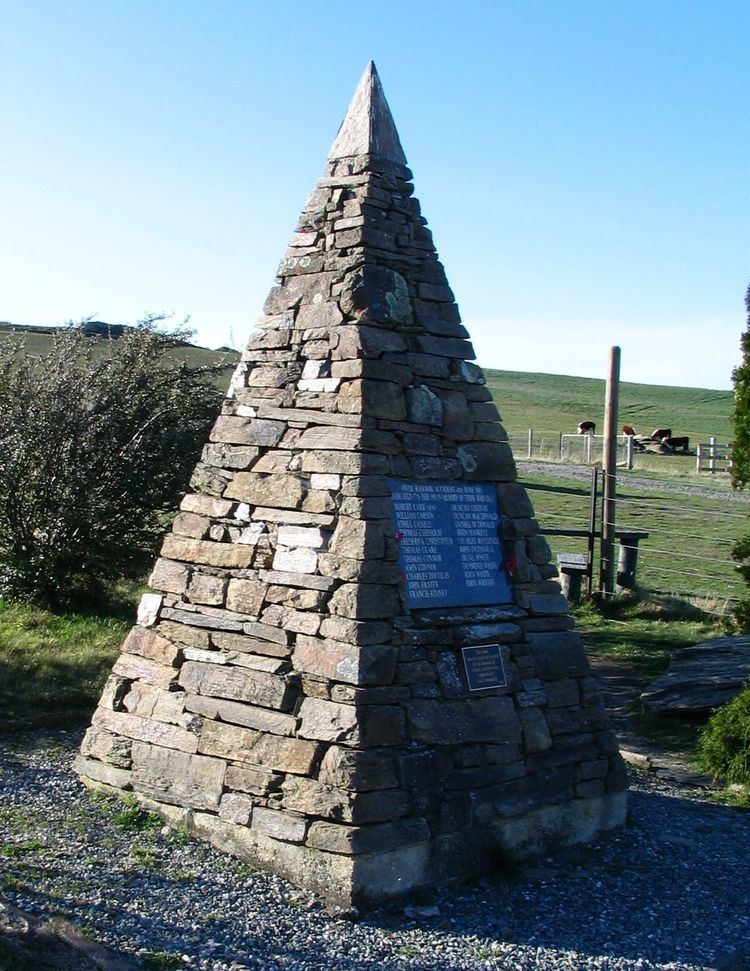 | ||
Cause Excessive speedDriver intoxicated Similar Tangiwai disaster, Ballantyne's fire, 1931 Hawke's Bay earth, TEV Wahine, Pike River Mine disaster | ||
The Hyde railway disaster occurred on 4 June 1943 near the small settlement of Hyde, New Zealand on a bend of the Otago Central Railway. At the time, it was New Zealand's worst railway accident; of the 113 passengers on board, 21 were killed and a further 47 were injured. But just over ten years later, the Tangiwai disaster took 151 lives on 24 December 1953. The Hyde disaster remains as the second worst railway accident in New Zealand's history.
Contents
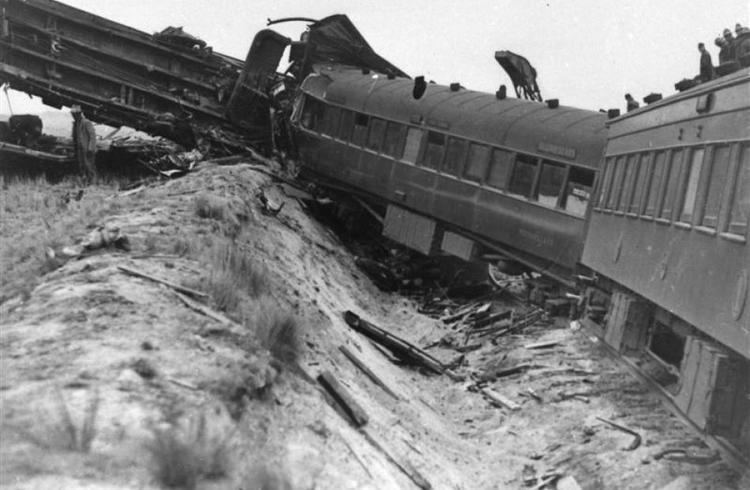
Background
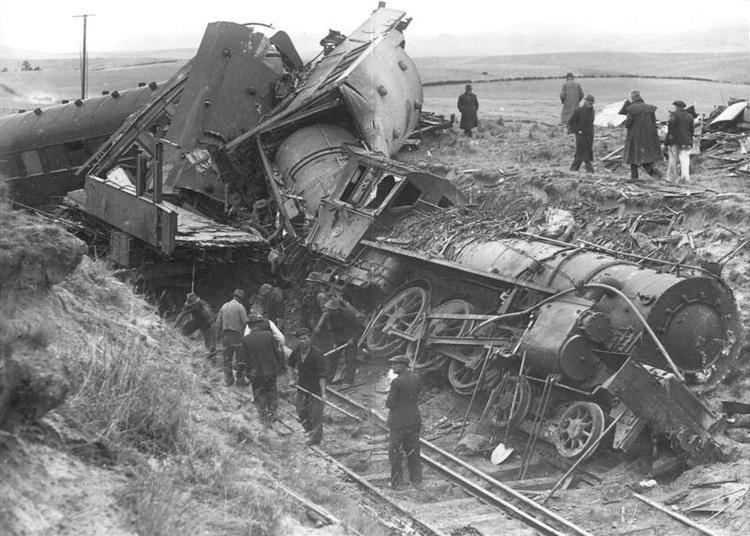
The Hyde disaster involved the daily passenger express train from Cromwell to Dunedin. In 1936, a year-round daily passenger express train was introduced, replacing a thrice weekly express that had been augmented by slow mixed trains. This service left Cromwell at 9am and reached Dunedin at 5:20pm; in 1937, the schedule was accelerated by half an hour and it was this timetable that was in force on 4 June 1943. The train was hauled by a steam locomotive, AB 782, and consisted of seven passenger carriages, a guard's van and two wagons of time-sensitive freight. The day was a Friday and it was to be followed by the King's Birthday long weekend, and this boosted patronage to 113, with many passengers travelling to the Winter Show in Dunedin or horse races in Wingatui.

Prior to the accident, some passengers became concerned about their safety. Regular travellers were aware that the train was travelling at excessive speed and one who had moved from his seat to stand with friends in another carriage was forced to return to his seat as the movement of the train made it uncomfortable to stand. In the minutes immediately preceding the accident, luggage and parcels fell from racks above the seats.
Accident
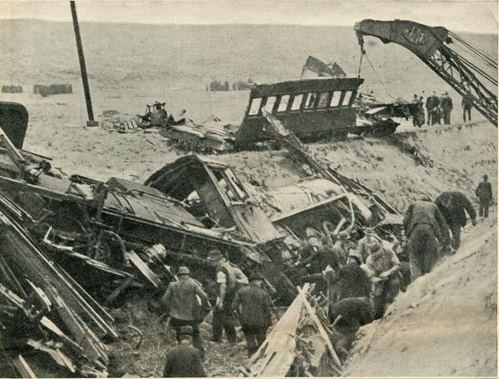
The disaster occurred at 1:45pm when the express failed to negotiate a 183 m radius curve in a deep cutting known locally as Straw Cutting, shortly after crossing the Six Mile Creek between Hyde and Rock and Pillar. The train derailed, with the engine coming to rest against the side of the cutting 60 m from where it derailed; the boiler burst, extinguishing the fire in the firebox but severely scalding the fireman. The carriages piled up around it; all seven passenger carriages had left the tracks, with the second overturning and coming to rest in front of the locomotive while four of the other carriages telescoped together. The force of the crash was such that the undercarriage of one was twisted into the form of a letter "S" and one passenger who survived was thrown out of their carriage, struck the side of the cutting, and bounced back in through another window. The guards van and two goods wagons at the rear failed to derail. Bits of the train were scattered throughout the surrounding farmland and the cutting contained a mass of splintered wood, bent steel, and broken seats; an attending doctor described it as resembling "the result of a bomb blast".
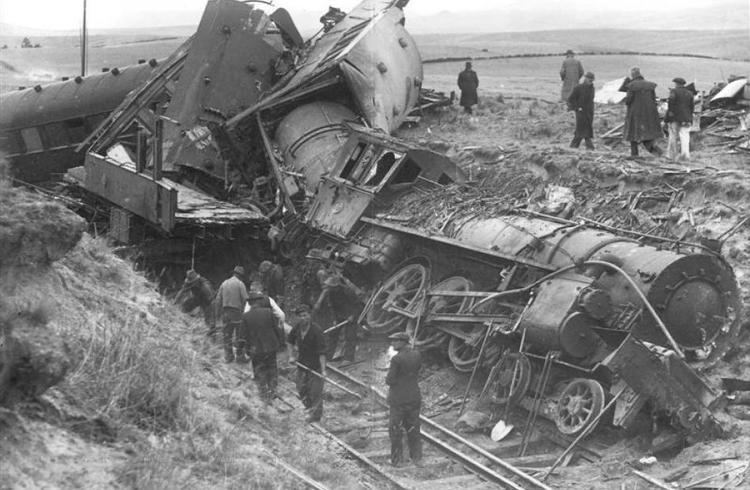
Due to the remote location, it took approximately ninety minutes for rescuers to arrive. Reports reached Middlemarch of an accident where there "were possibly a few injuries" and medical personnel did not initially travel in a hurry to the disaster, but upon catching sight of the disaster from a rise in the road half a mile away, they proceeded swiftly. In the intervening time, the injured were tended by the passengers from the relatively undamaged rear carriages and by local farmer Pat Kinney who owned the property through which the cutting ran; his son Frank had boarded the train at its last stop in Hyde and was one of the deceased. Some passengers were trapped in the wreckage for several hours and medical personnel – with the assistance of railway maintenance staff – worked until it was too dark to see.
Casualties
Those killed were:
Aftermath
The isolation of the disaster site was compounded by wartime conditions and little news was published of the disaster. Relatives of the victims did not receive news of their loss until the next day.
A board of inquiry was established to investigate the crash. Based on the state of the wreckage, it found that the train had to be travelling in excess of 70 miles per hour (110 km/h) on a curve with a speed limit of 30 miles per hour (48 km/h) and had thus derailed due to the operation of centrifugal force. It found that the judgement of the driver, 55-year-old John Corcoran, was markedly impaired as he had been drunk, and thus charged him with serious dereliction of duty. He was tried in the Dunedin Supreme Court with manslaughter, found guilty, and sentenced to three years' jail. The train's guard was reprimanded for not taking action when he became aware of the train's excessive speed, but he was not criminally prosecuted.
In the years after the disaster, it had little legacy as it was overshadowed by World War II. When a memorial was established to victims of the Tangiwai disaster decades later, relatives of Hyde disaster victims began to work for their own memorial, led by Molly Winter and Elizabeth Coleman. In August 1990, a committee was formed to erect a monument, a 2.5 m high cairn, at an easily accessible site near the location of the disaster. The cutting of the disaster itself can also be walked, as the Otago Central Railway closed on 30 April 1990 and has been converted into the Otago Central Rail Trail.
The disaster was the only significant accident involving passengers that occurred on the Otago Central Railway between the start of construction in 1877 and closure.
